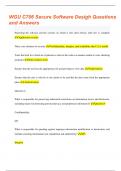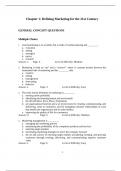Exam (elaborations)
PSYCHIATRIC/MENTAL HEALTH NURSING EXAM 1 – QUESTIONS AND ANSWERS 100% VERIFIED
- Course
- Institution
PSYCHIATRIC/MENTAL HEALTH NURSING EXAM 1 – QUESTIONS AND ANSWERS 100% VERIFIED A patient says to the nurse, "I dreamed I was stoned. When I woke up, I felt emotionally drained, as though I hadn't rested well." Which response should the nurse use to clarify the patient's comment? a. "It ...
[Show more]












